I was learning on my feet every single performance.
The star we know today as Julie Andrews was born Julia Elizabeth Wells in Walton-on-Thames, Surrey, then a small village, roughly 18 miles south of London, England. Her father, Ted Wells, was a schoolteacher and enjoyed the simple life of the countryside. Her mother, Barbara, a talented pianist, taught piano but longed for a career on the stage. Ted and Barbara Wells divorced on the eve of World War II, and Barbara married Ted Andrews, a professional singer. Ted and Barbara Andrews formed a musical act and toured England entertaining the troops. Ted Andrews gave the little girl her first singing lessons, and was immediately impressed with the child’s strong voice, large vocal range, perfect pitch and precocious musical ability. At age eight, she was taken to study with Lilian Styles-Allen, a noted concert singer. Styles-Allen trained her pupil in operatic repertoire and taught her the perfect diction for which she would become famous. Although Julia remained close to her father, she lived with her mother and took her stepfather’s surname when she joined the family act at age ten.
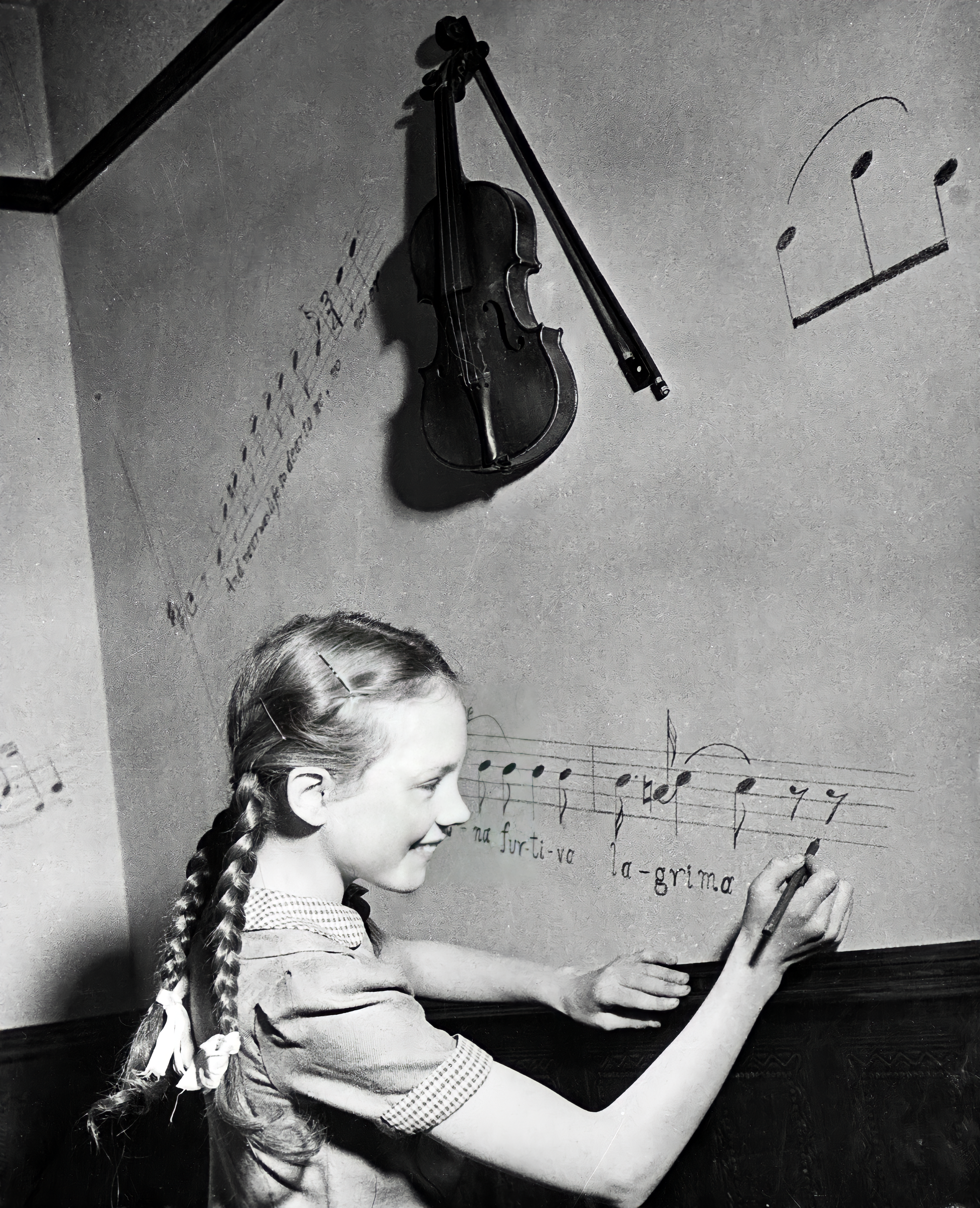
Julie Andrews, as she was now known, made her radio debut in 1946, singing a duet with Ted Andrews on a BBC variety show. She gave her first performance as a solo artist at London’s Stage Door Canteen, where she was seen by two members of the Royal Family, the mother and sister of the present Queen. The exquisitely self-possessed little girl with the crystal-clear voice was attracting the attention of serious theatrical management and was soon ready to make the move from provincial music halls to the theaters of London’s West End. At age 12, Julie Andrews was cast in a musical revue, Starlight Roof, at the London Hippodrome. Her first appearance stopped the show, and the revue ran for over a year. Julie Andrews became the youngest performer ever to appear at a Royal Command performance, singing an aria from Mignon for King George VI at the London Palladium.
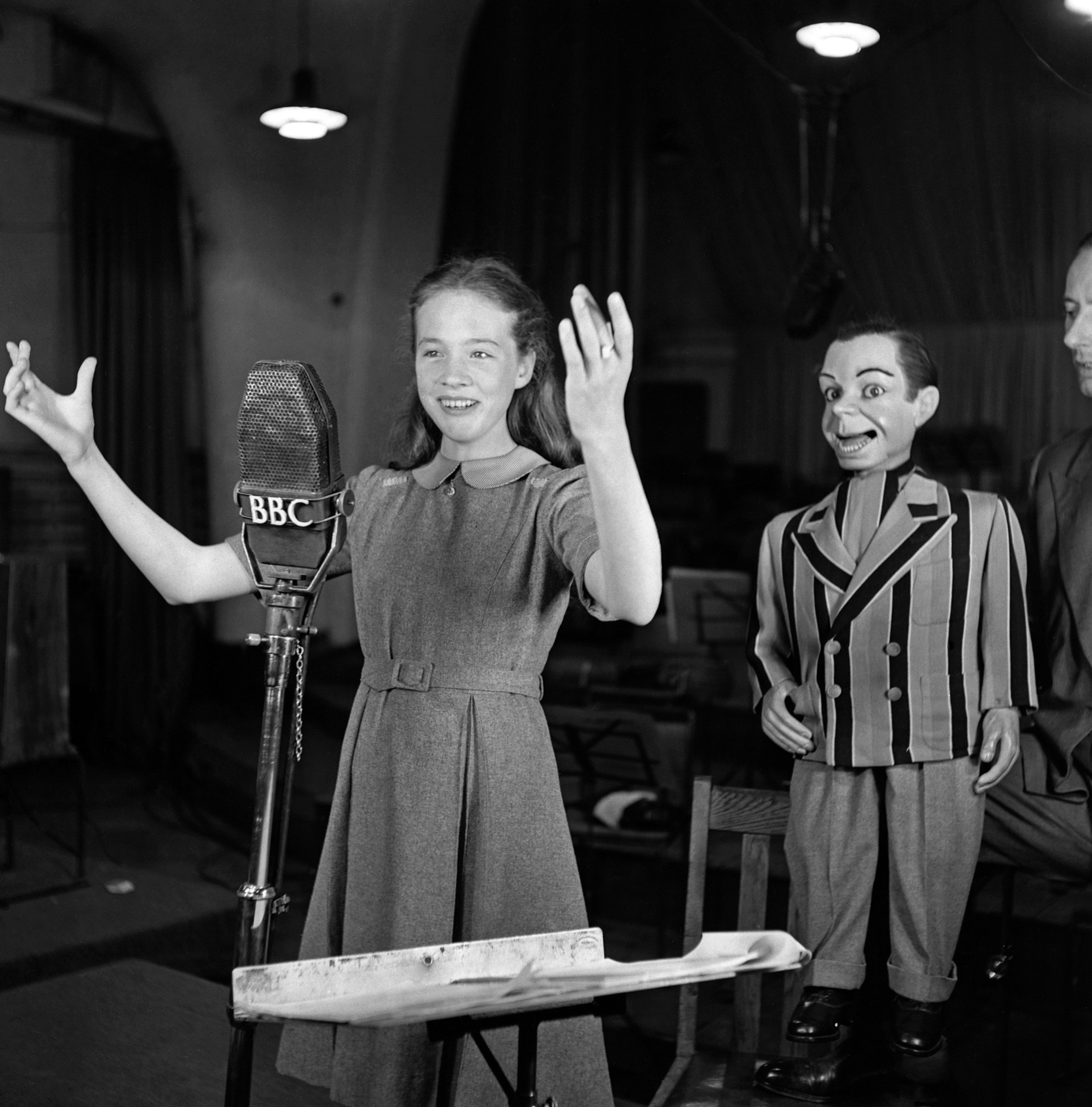
The American film studio, Metro-Goldwyn-Mayer, which had recently opened a London branch, made a screen test of the young singer, perhaps seeing her as a successor to the child singing stars of the pre-war era. The studio failed to offer her a contract, dismissing her as “unphotographable.” Nevertheless, she soon appeared on one of Britain’s first television variety programs.
The teenage Julie Andrews was a regular presence on popular British radio shows in the 1950s, and as she grew into young womanhood, she played leading roles in a series of Christmas pantomimes. The “pantos,” a holiday tradition in Britain, are popular family entertainments, usually based on a familiar fairy tale. Far from being silent, as the name might suggest, they typically include lots of singing, dancing and male comedians in drag. Each holiday season of her teens found Julie Andrews playing another fairy tale heroine, from Little Red Riding Hood to princesses in Aladdin and Jack and the Beanstalk. She was appearing in one of these when she met an aspiring artist named Tony Walton, who would play a large role in her later life. During the regular season, she continued to perform as a solo artist and with Ted and Barbara Andrews.
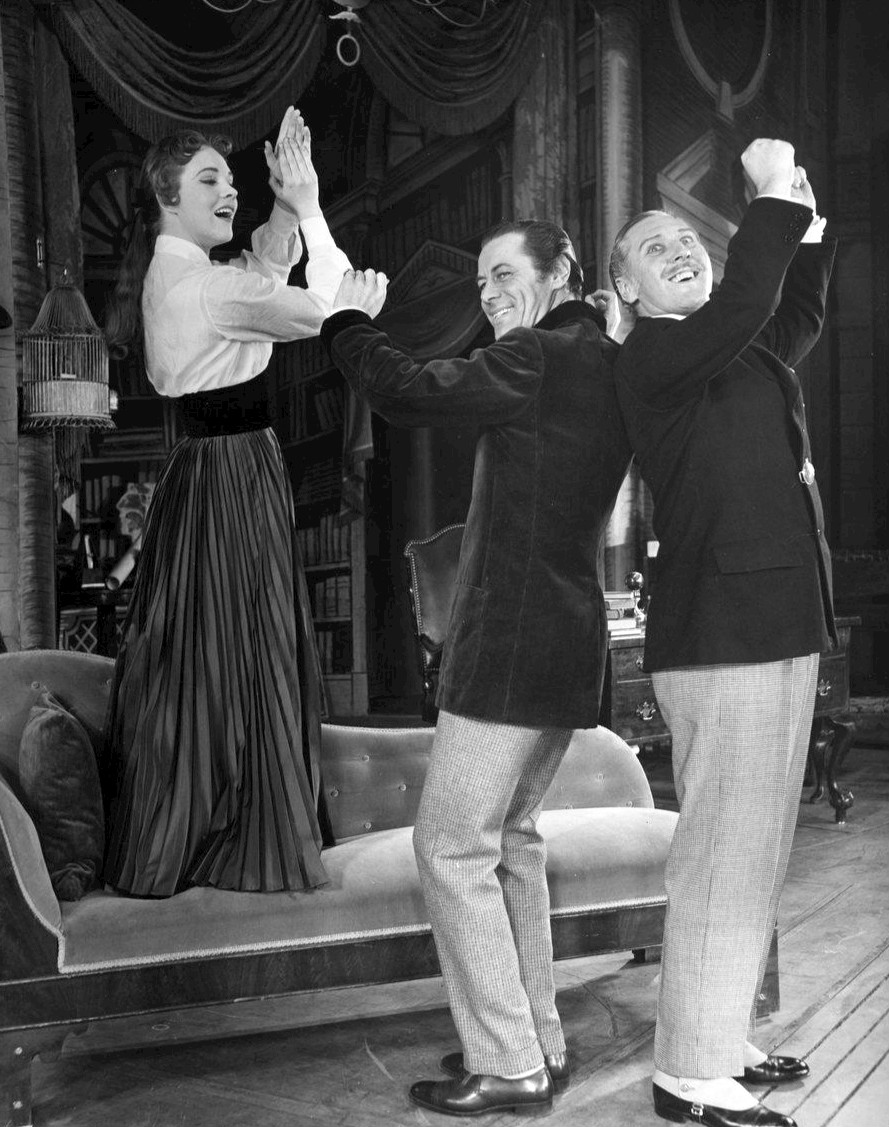
Julie Andrews was playing the title role in the pantomime Cinderella when she was first seen by the songwriter Sandy Wilson and the American producer Cy Feuer. Wilson was the creator of a popular West End musical, The Boy Friend, a pastiche of the musical comedies of the 1920s. Cy Feuer planned to bring the show to Broadway and wanted to recruit a British cast to preserve the flavor of the London production. When Feuer and his partner, Ernest Martin, offered Julie Andrews the lead in the Broadway production of The Boy Friend, she was reluctant to travel to America. She was only 18 and had never traveled so far from her family. She finally agreed to a one-year contract, and boarded the plane for the country where she would spend most of her life.
The Boy Friend was an immediate success on Broadway, and the teenage Julie Andrews was a sensation, delighting critics and audiences with her fresh good looks, grace, sparkling singing voice and gem-like diction. She was asked to audition for the words and music team of Alan Jay Lerner and Frederick Loewe, who were preparing the original production of My Fair Lady, their musical version of the play Pygmalion by George Bernard Shaw. Lerner and Loewe had not enjoyed a success on Broadway since Brigadoon, almost a decade earlier, and many Broadway hands doubted that the two could make a successful musical out of George Bernard Shaw’s classic comedy.
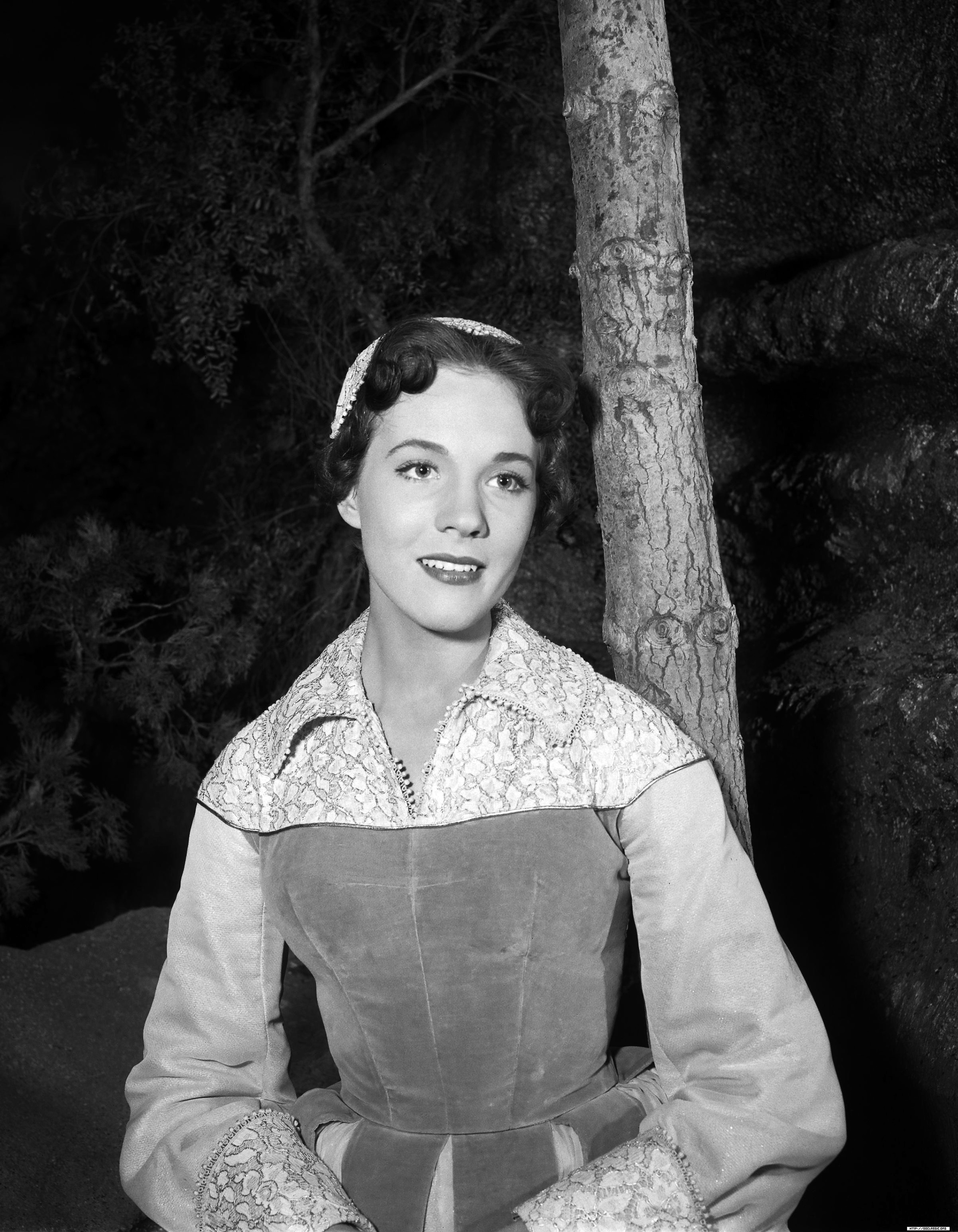
The role of Eliza Doolittle in Pygmalion — a bedraggled street urchin in the first act, transformed into a regal society beauty in the second — had already been played by many distinguished actresses on stage and screen. The musical adaptation called for a versatile young actress who was also an accomplished singer. Although a number of established stars coveted the part, Lerner, Loewe and director Moss Hart decided to take a chance on the 20-year-old Julie Andrews, who had never before acted in such a demanding role. Her costar, Rex Harrison, an experienced stage and film star, had never sung on stage before. The rehearsals were difficult. Although Andrews was more than capable of carrying off the demanding songs, her relative lack of acting experience caused unease in the company. Director Hart worked with her tirelessly, a process she recounts in her interview with the Academy of Achievement.

When My Fair Lady opened in 1956, it was an unprecedented success. Critics acclaimed it as the greatest musical ever staged and it sold out months in advance. Julie Andrews won universal praise for her incandescent performance. The original cast recording became a best-seller, one of the most successful releases in the history of Columbia Records. It remained a mainstay of the label’s catalogue for many years.
Days before the show opened, Andrews also made her American television debut in a musical version of the Maxwell Anderson play High Tor, appearing opposite Bing Crosby. After playing Cinderella in pantomime and starring in the most successful of modern Cinderella stories, Julie Andrews was asked to play the role yet again when America’s premier theatrical songwriters, Rodgers and Hammerstein, wrote an original musical for television with the new star in mind. Rodgers and Hammerstein’s Cinderella aired live on CBS, with Andrews taking a night off from her eight-performance-a-week schedule in My Fair Lady.

After two years of playing Eliza on Broadway, Julie Andrews returned at last to England to star in My Fair Lady in London’s West End. The show was just as successful in London as it had been in New York, and she settled in for a second long run in the show. While in London, she renewed her acquaintance with her childhood friend Tony Walton, who was now embarking on his own theatrical career as a designer of sets and costumes. Andrews and Walton were married in 1959.
Back in New York, Lerner, Loewe and director Moss Hart were eager for Julie Andrews to star as Queen Guinevere in their new musical, Camelot, with Richard Burton as King Arthur and Broadway newcomer Robert Goulet as Lancelot. Despite the acclaimed performances of a prodigiously talented cast, the show’s Broadway run got off to a rocky start. Initial ticket sales were slow, but when Andrews and Burton performed scenes from the show on the popular Ed Sullivan television program, box office demand skyrocketed. The original cast recording sold well and was a particular favorite of President John F. Kennedy and Mrs. Kennedy in the White House.
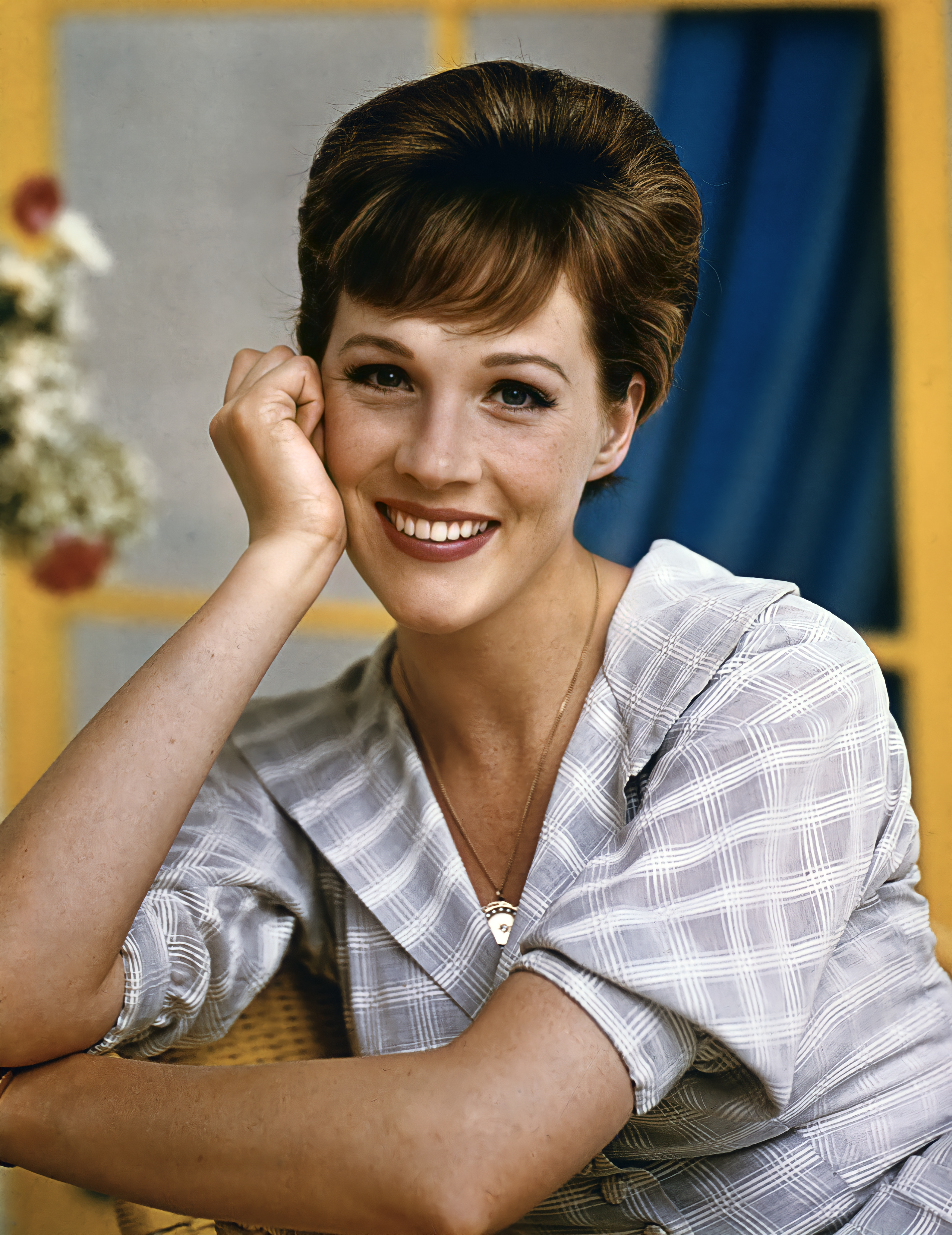
During her two-year run in Camelot, Andrews was approached by Walt Disney to star in a film musical of the children’s book Mary Poppins. At the time, she was expecting her first child, but Disney was willing to wait until after her child was born to begin production. Andrews and Walton had a daughter, Emma, in 1962. Andrews had hoped to be cast in the film version of My Fair Lady; she and her many admirers were disappointed when Warner Brothers chose to cast an established film star, Audrey Hepburn, in the role. Publicity surrounding the choice was intense; Hepburn was not a trained singer, and her vocals were dubbed by singer Marni Nixon.
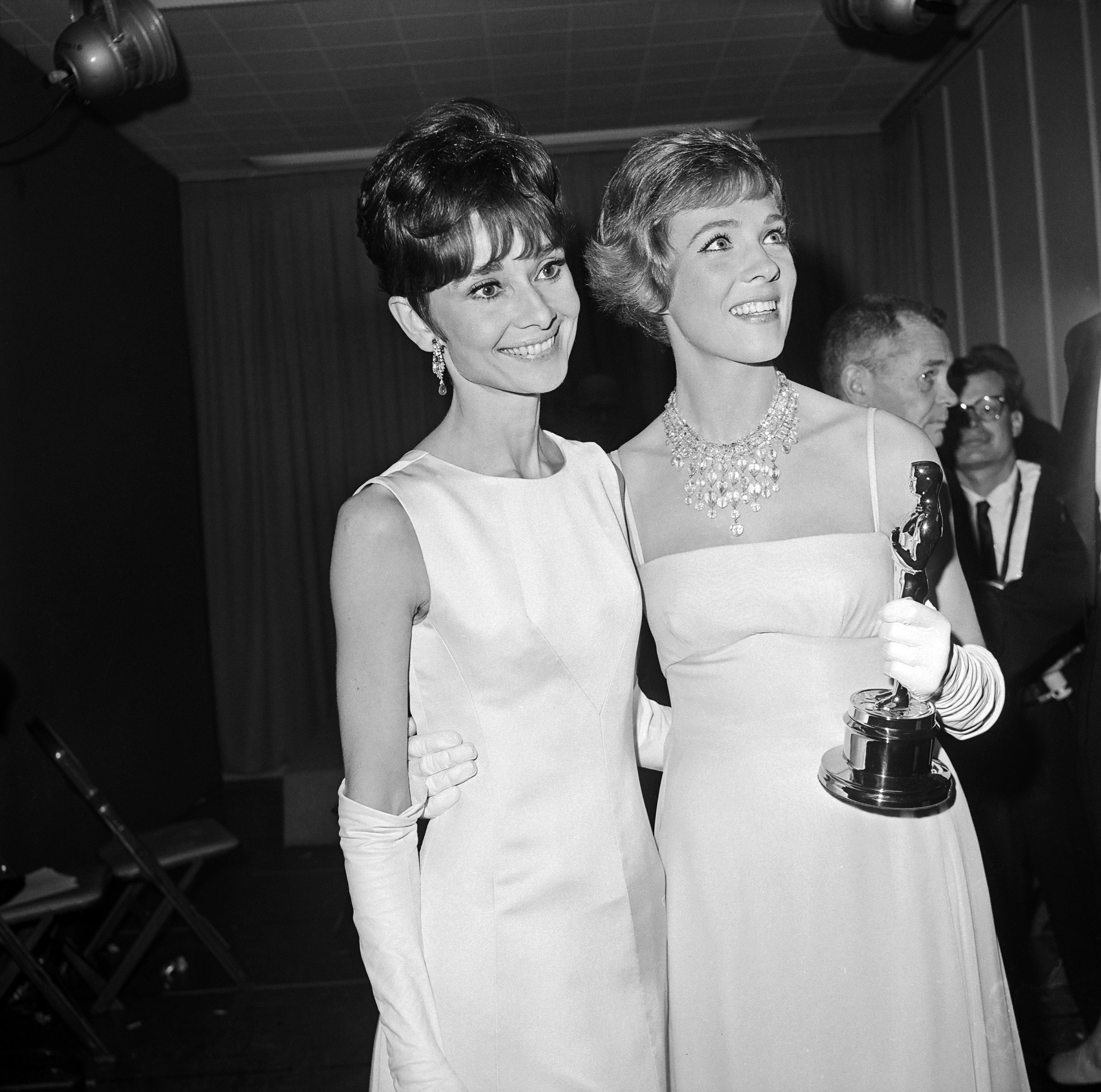
Meanwhile, Julie Andrews set to work on her film for Walt Disney. Mary Poppins was a huge success and immediately established Julie Andrews as an international film star. Her triumph was confirmed when she won the 1964 Best Actress Oscar for her very first film appearance. She followed up this success with her dramatic film debut in the World War II satire The Americanization of Emily with James Garner, who would become a frequent co-star and lifelong friend.
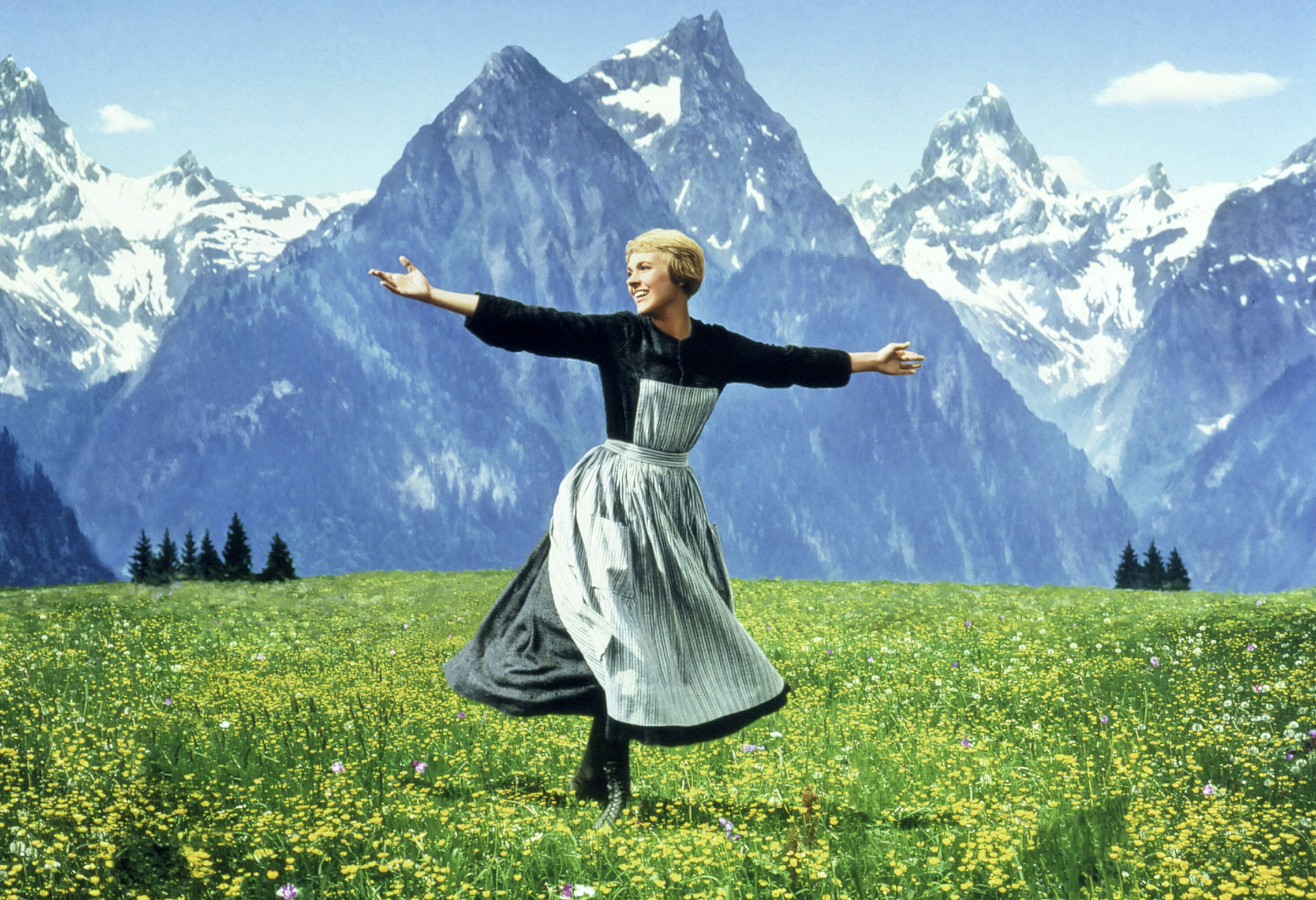
Andrews scored the most spectacular success of her career with the starring role in The Sound of Music, another Broadway musical adaptation and the most successful motion picture made up until that time. Andrews was nominated for an Oscar again, and the film was honored as Best Picture of the Year. It remains a beloved classic. Forty years after its original release, it draws huge crowds to massive outdoor sing-along screenings such as those held in the 25,000-seat Hollywood Bowl. The reigning international film star of the mid-1960s, Andrews starred in the most successful film of 1966, Hawaii, and in the Alfred Hitchcock thriller Torn Curtain with Paul Newman. In 1967, she shone in yet another successful musical, Thoroughly Modern Millie. That same year, her marriage to Tony Walton ended, although the pair remained close friends and have often collaborated in the years since.
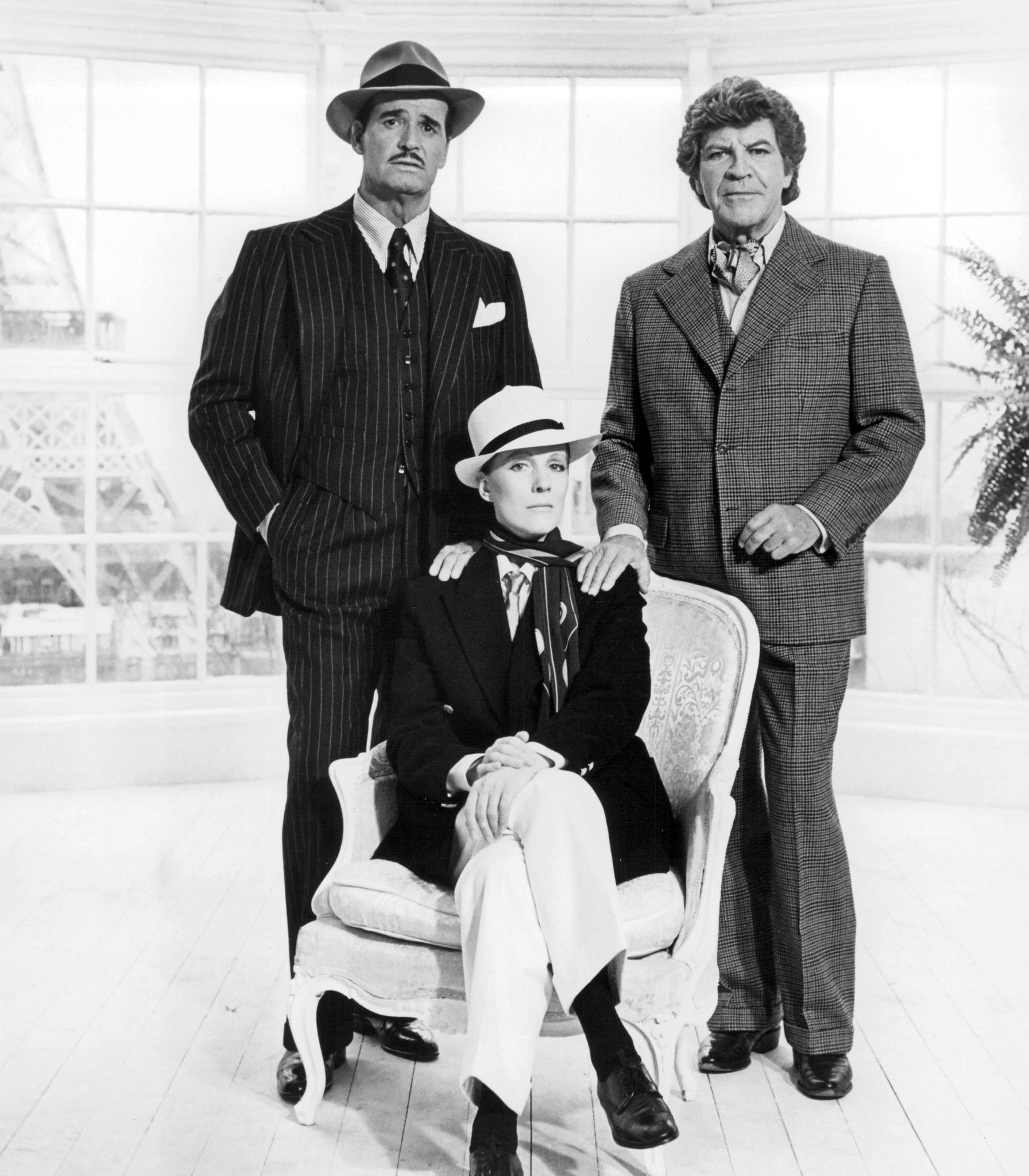
A film biography of the British singer and actress Gertrude Lawrence — Star! — was a box office disappointment. Audiences were turning away from musical films. Her next starring vehicle, a musical spy story of the First World War, Darling Lili, was also a commercial failure, but proved to be a personal success for Andrews on another level. Her first collaboration with director Blake Edwards, it marked the beginning of a 41-year partnership in art and life. Andrews and Edwards were married in 1969. The couple raised his two children from a previous marriage and adopted two more of their own.
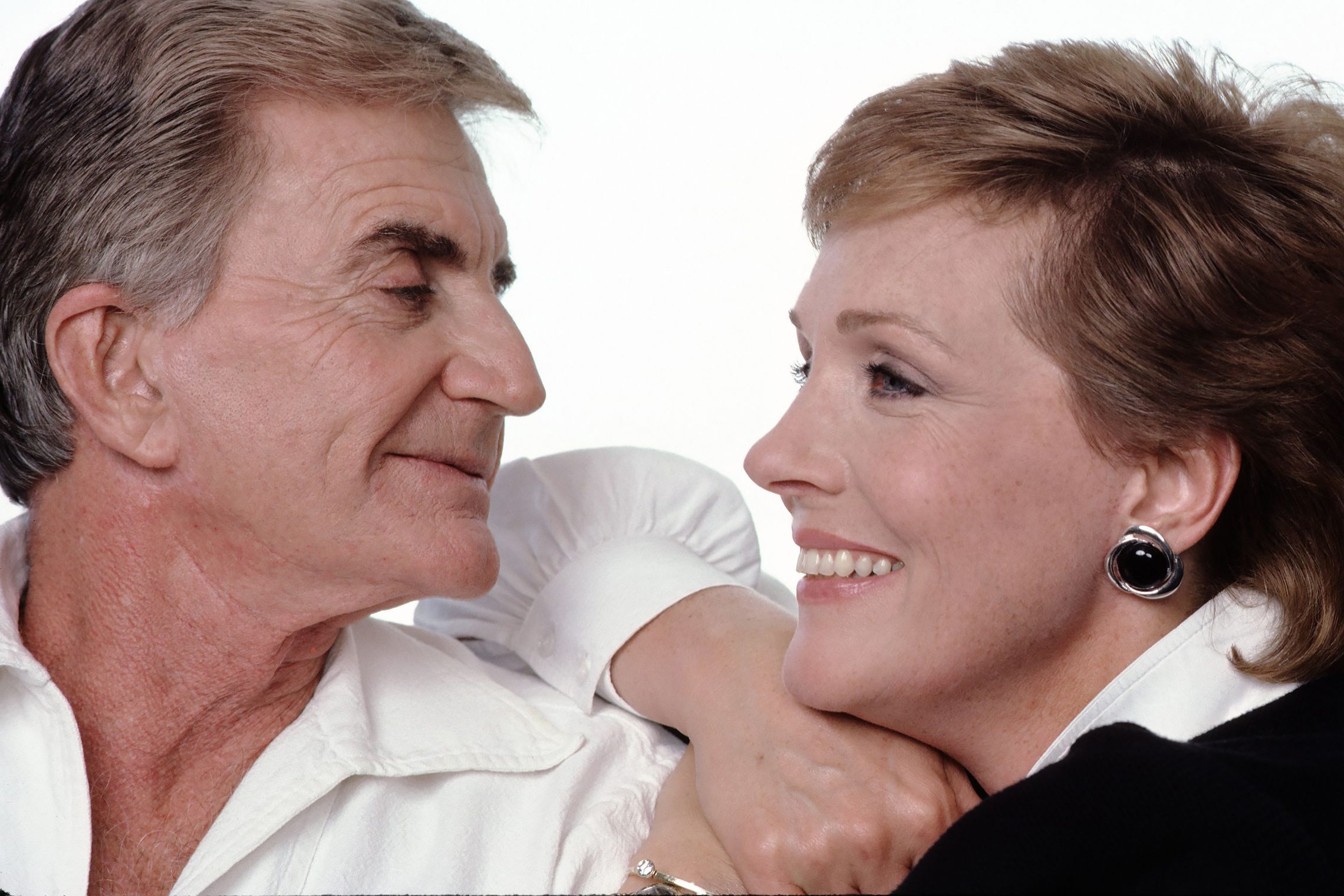
After a number of successful television specials with her friend Carol Burnett, Julie Andrews hosted her own weekly variety show on CBS television in the 1972-73 season. She also enjoyed great success as a concert artist, with appearances at the Royal Albert Hall and the London Palladium. In these years, she also began writing children’s books under her married name, Julie Andrews Edwards. After the success of Mandy (1971) and The Last of the Really Great Whangdoodles (1974), she collaborated with her daughter, educator Emma Walton Hamilton, on Dumpy the Dump Truck and its many sequels, a popular series of books for very small children. Her novels Dragon and Simeon’s Gift introduce young readers to the lore of the Middle Ages. Several of her books have been illustrated by her ex-husband, Tony Walton.
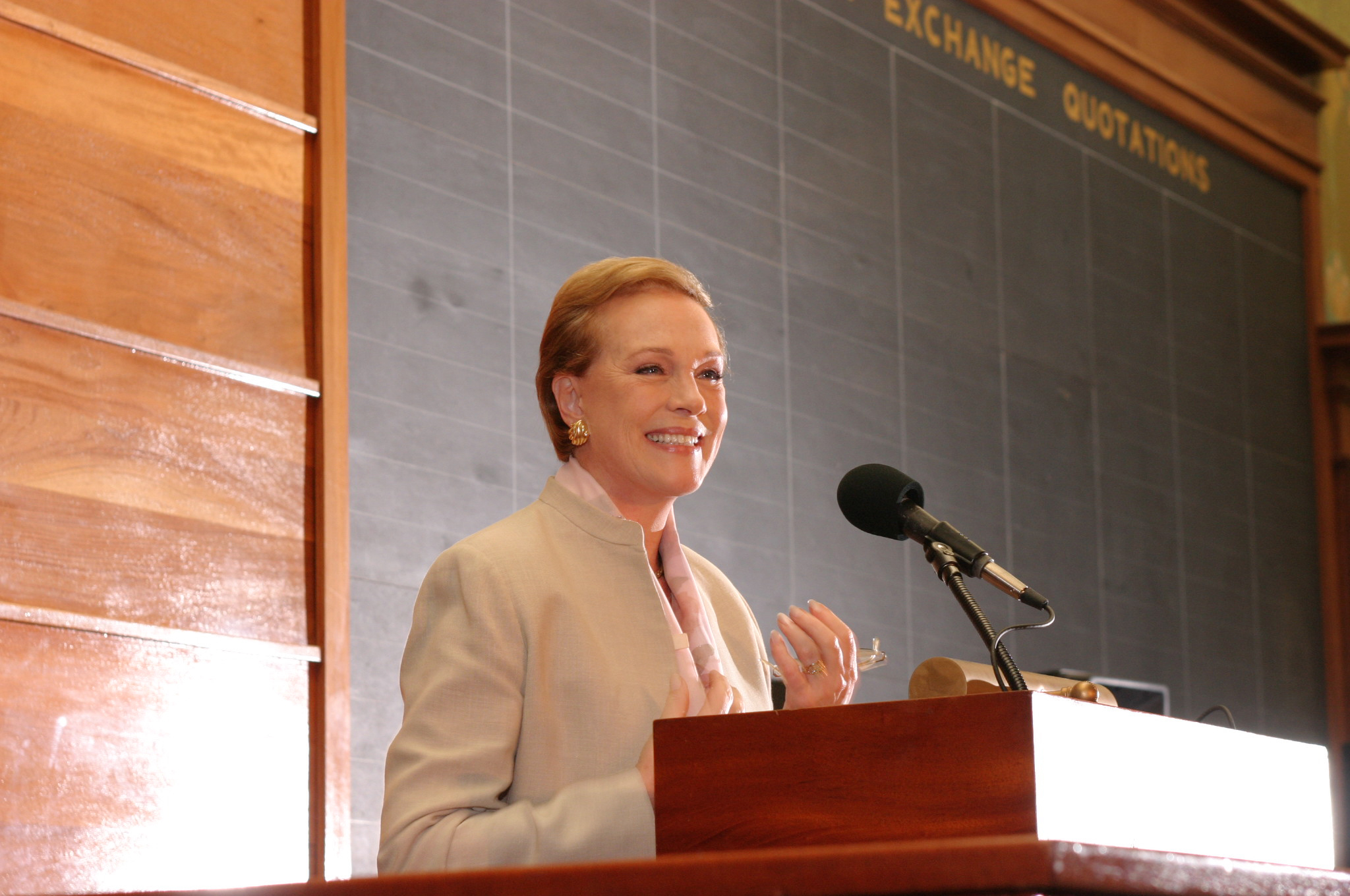
Although Hollywood was no longer producing the kind of musical films that had made her famous, Julie Andrews continued to develop her dramatic talents in a wider variety of roles in the 1970s and ’80s, appearing in a number of films directed by her husband, Blake Edwards, including The Tamarind Seed, 10, S.O.B. and That’s Life. Andrews and Edwards enjoyed a notable success with the 1982 film Victor/Victoria, in which Andrews played a woman who disguises herself as a young man and achieves success on stage as a female impersonator. This comedy of gender confusion struck a chord with international audiences in the 1980s and reunited her with co-star James Garner.
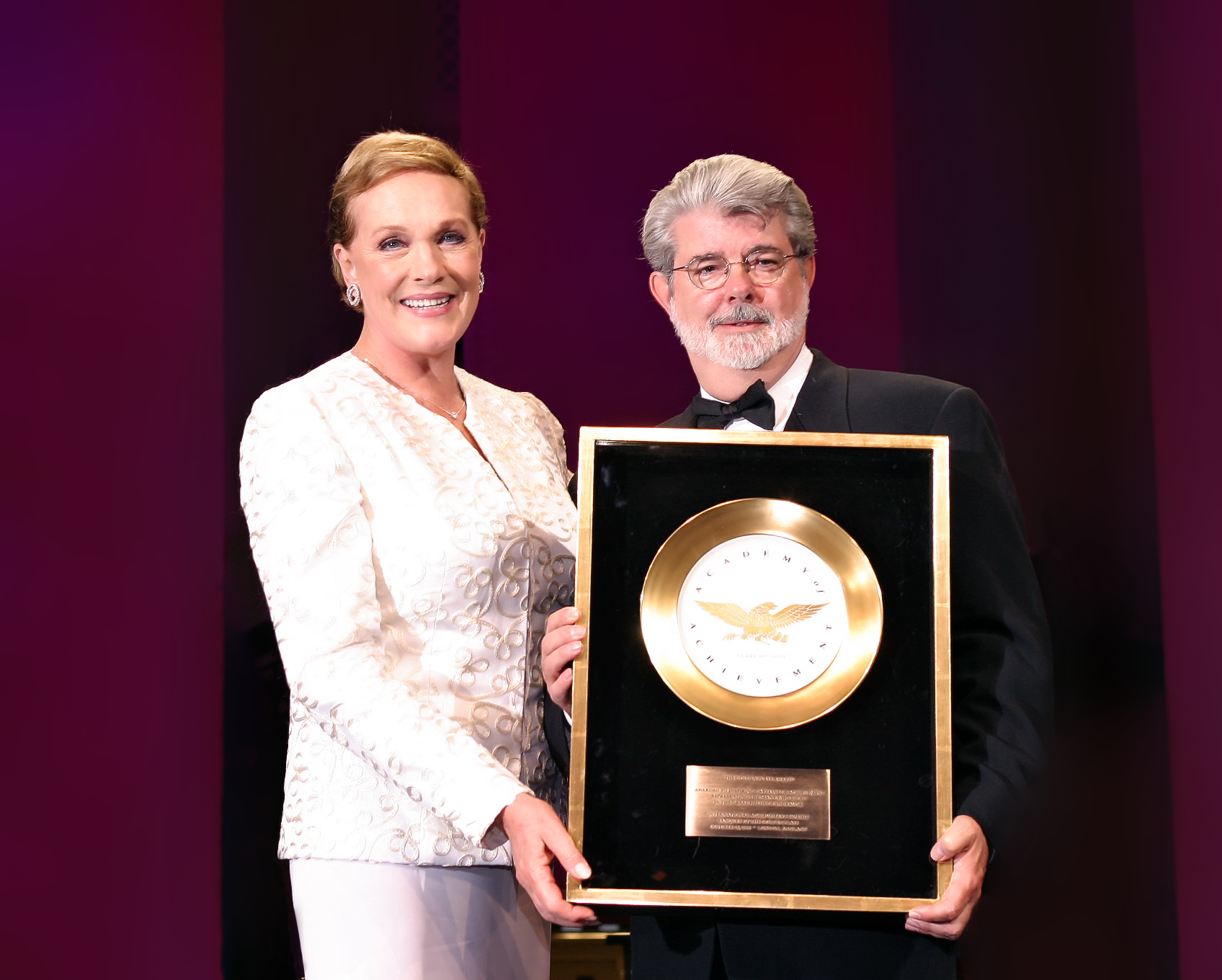
In the 1990s, Andrews became increasingly involved in international charities. Since 1992, she has served as Goodwill Ambassador for the United Nations Development Fund for Women (UNIFEM), which assists women and their communities in impoverished countries. Another favorite charity is Operation USA, a California-based international relief agency.
Andrews returned to the New York theater in 1993 with an appearance in the small ensemble cast of the Stephen Sondheim revue Putting It Together. It was clear that theater audiences wanted more of Julie Andrews, and she brought a stage version of Victor/Victoria to Broadway in 1995. An enormous success with critics and the public, Andrews appeared in the show for two years. After developing vocal problems, due to the growth of ovules on her vocal cords, she sought treatment through surgery, but the operation damaged her larynx irreparably, effectively ending her singing career. Expert opinion concluded that the surgery had been improperly performed and Andrews received a settlement, reported to be as high as $30 million.
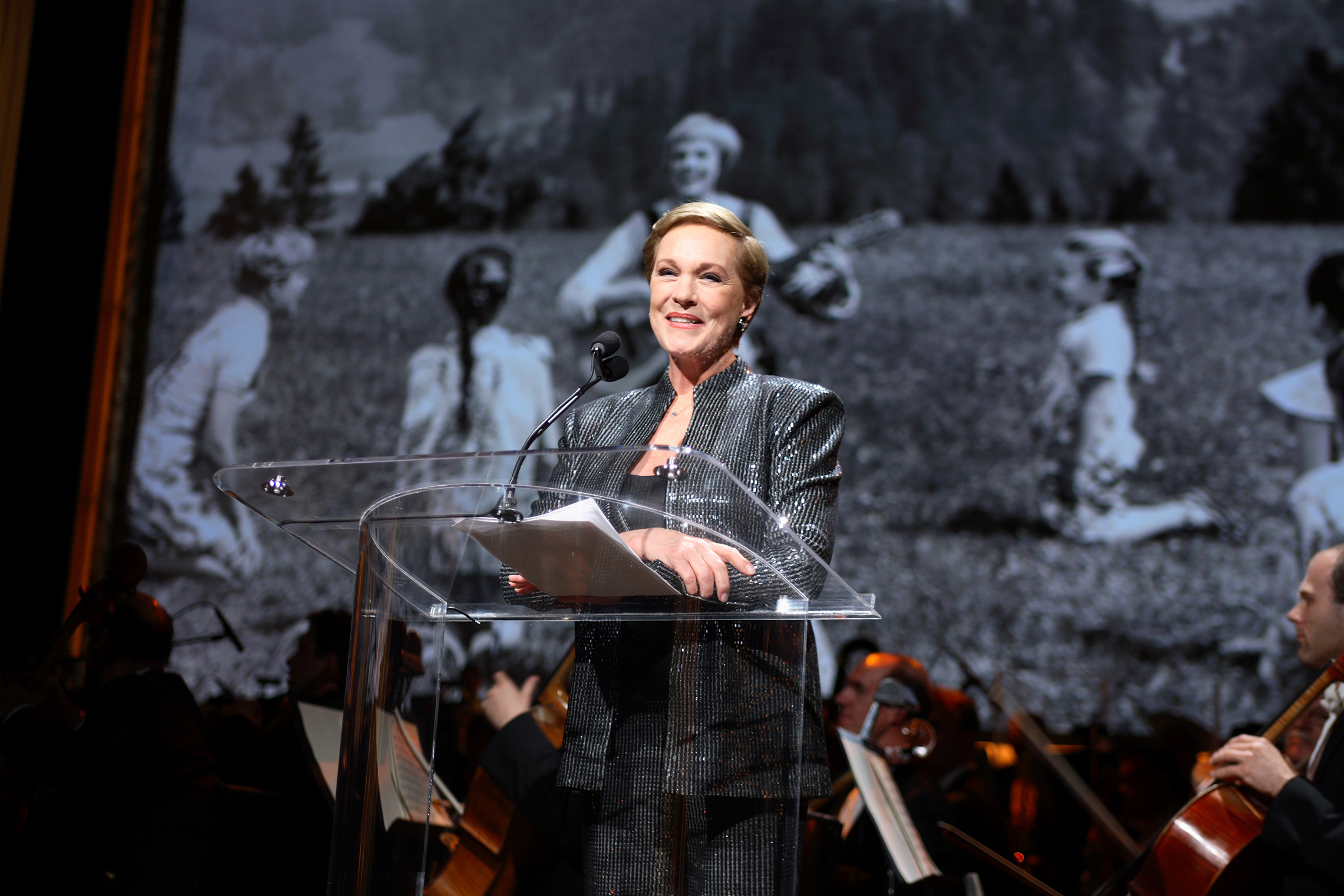
Her speaking voice remained unimpaired, and Andrews has continued her acting career. A new audience discovered Julie Andrews through her role as the Queen in the film The Princess Diaries and its sequel. Her speaking voice has also been heard in the animated Shrek films and in 2010’s Despicable Me. In the sixth decade of her career, Julie Andrews explored still more avenues of the performing arts, directing a successful revival of The Boy Friend, the show that first brought her to America as a teenager. She has continued to act, direct, write and contribute her boundless energy to favorite causes, including Operation USA and Haitian earthquake relief.
In 2008, Andrews published the first volume of her autobiography: Home: A Memoir of My Early Years, recounting her life up until her departure for Hollywood to star in Mary Poppins. The book received excellent reviews and immediately went to the top of The New York Times bestseller list. The same year, she toured the United States in a concert performance with orchestra and backup singers, Julie Andrews: The Gift of Music.
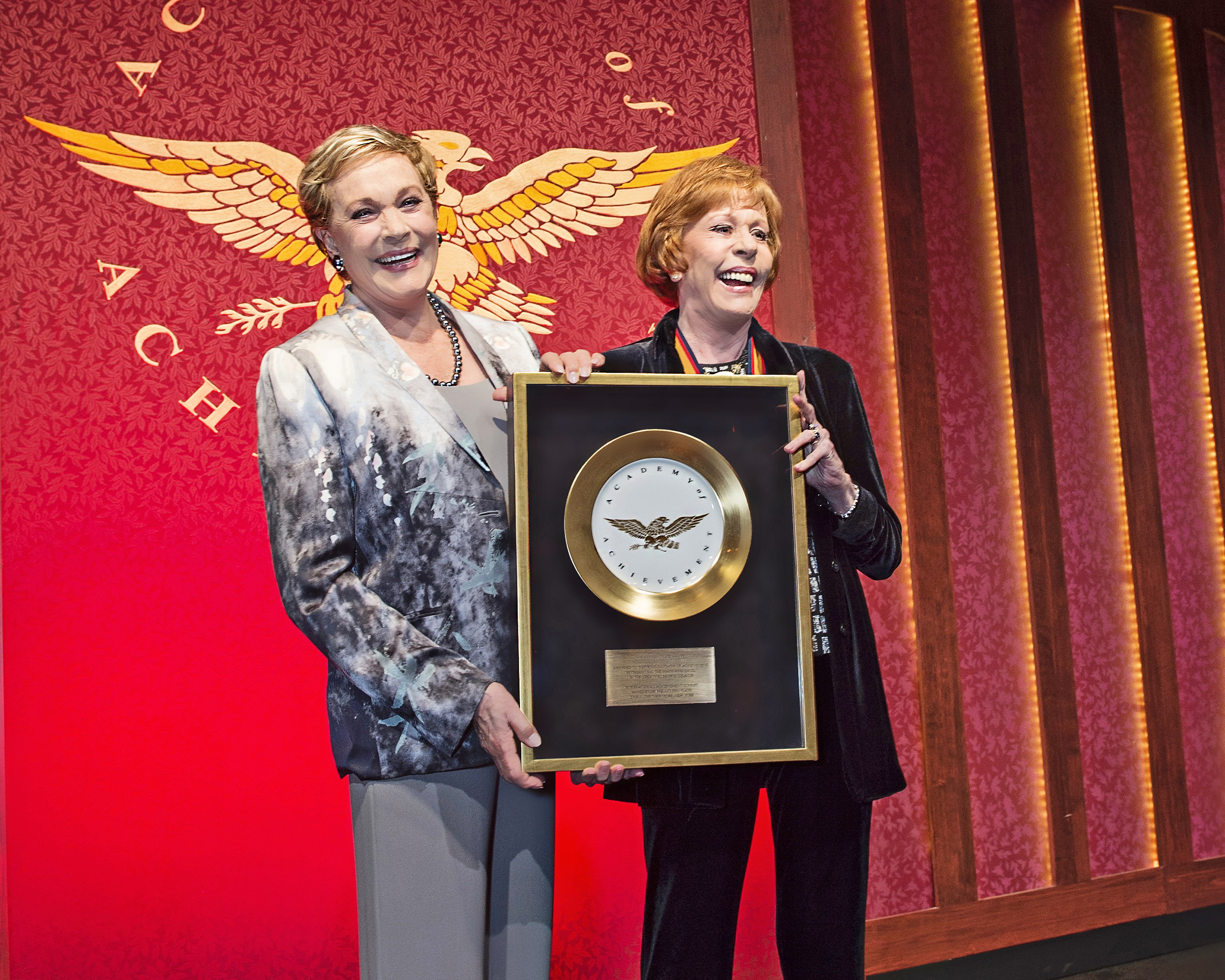
She topped the bestseller lists again in 2010 with her 23rd book, A Very Fairy Princess. The same year saw Julie Andrews back on the big screen in The Tooth Fairy, and marked her return to the London stage for the first time in 21 years, in a performance of Julie Andrews: The Gift of Music at the O2 Arena before 20,000 adoring fans. This triumphant year came to a sad end with the loss of her husband of 41 years, Blake Edwards, shortly before Christmas. Julie Andrews and her children were with Edwards at the time of his death in a Santa Monica hospital. The couple had long maintained homes in Los Angeles and in Gstaad, Switzerland.
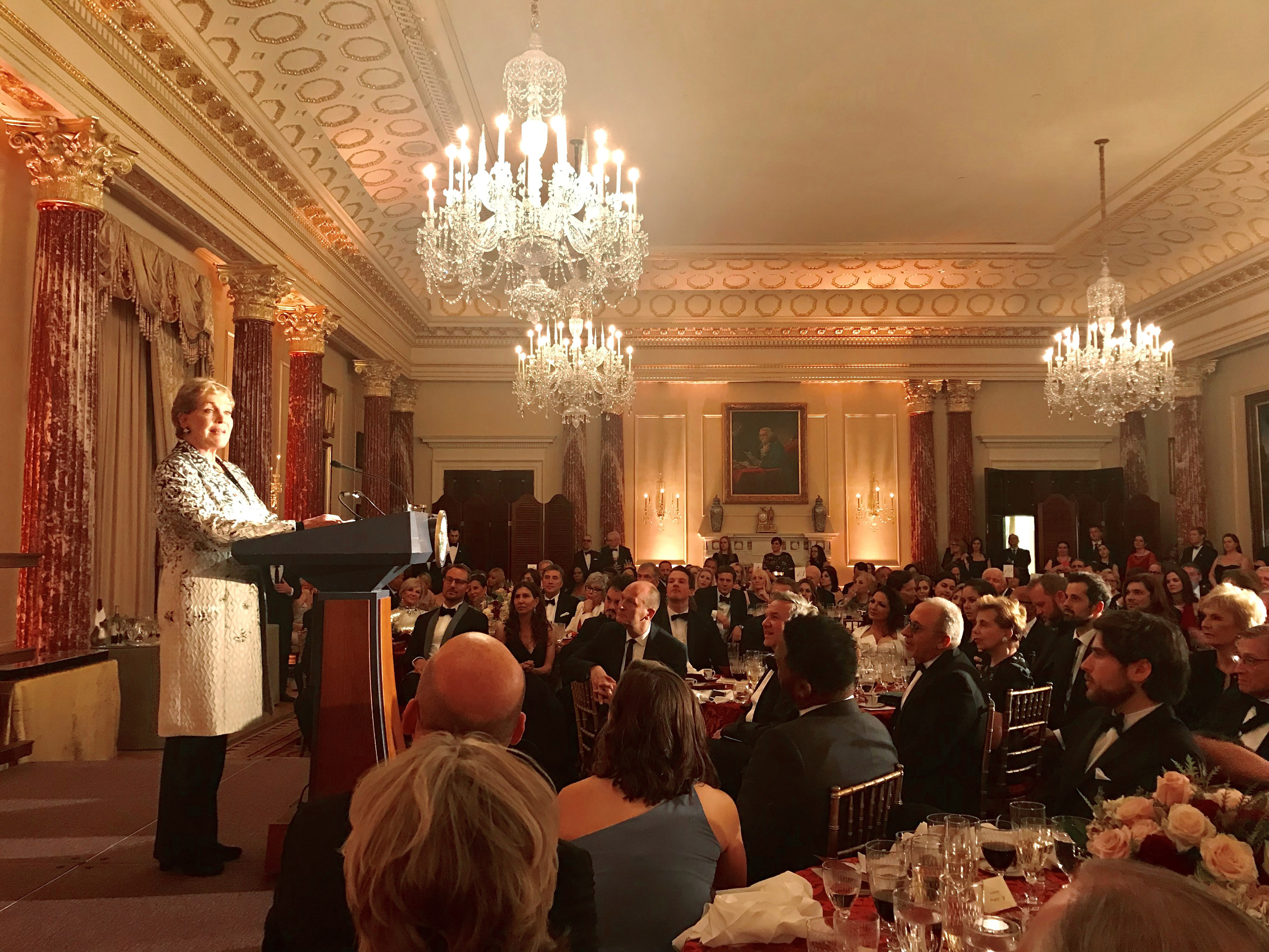
Julie Andrews published a second volume of autobiography, Home Work: A Memoir of My Hollywood Years, in 2019. She continues her alternate career as children’s book author and advocate for literacy and the arts. To date, Andrews and her daughter, Emma Walton Hamilton, have written more than 30 books for children and young adults. In April 2020, as families all over the world sheltered at home to arrest the spread of the COVID-19 virus, American Public Media announced a new weekly podcast series, Julie’s Library, in which Andrews and her daughter read their favorite children’s books aloud, with music, sound effects and special guests. Andrews hopes these podcasts will “bring the comfort of storytelling to families during these unprecedented times.”

One of the most beloved performers in the world, Julie Andrews made her Broadway debut at age 18 in The Boy Friend. Historic successes followed in the original productions of My Fair Lady and Camelot. She won the Oscar for Best Actress in her first film, playing the title role in Mary Poppins. Perhaps the greatest triumph of her career came with the leading role in The Sound of Music, one of the most popular motion pictures of all time. Her crystalline singing voice, wholesome appeal, natural elegance and sly humor made her a top box office draw around the world.
In 1989, she became the first actress to receive the special Tribute Award of the British Academy for Film and Television. Over the course of her career she has also won five Golden Globe Awards, including two for World Film Favorite, and one for her performance in the filmVictor/Victoria, a role she reprised for an acclaimed run on Broadway in 1995. She has enjoyed continued success in films such as The Princess Diaries.
Over 30 years ago, she embarked on a second career as an author of children’s books, includingThe Last of the Really Great Whangdoodles and the popular Dumpy the Dumptruck series. She was named a Dame Commander of the British Empire by Queen Elizabeth II in 2000 in recognition of her extraordinary career and her service to charities such as UNIFEM and Save the Children.
Let’s talk about the original production of My Fair Lady. Where and when did My Fair Lady open?
Julie Andrews: Well, it opened out of town in New Haven on a stormy winter’s night. Great drama. Then it opened in 1956 at the Mark Hellinger Theater in New York City on Broadway.
There were people who thought it was folly to tamper with George Bernard Shaw’s original play, Pygmalion. Did you hear that?
Julie Andrews: I was a little curious about it myself, but I only had to hear the songs to know that Alan Jay Lerner had really done Shaw justice. I believe to this day that these songs just took off where the text of the play finished. And he was a giant. Both Lerner and Loewe, and particularly Moss Hart, who was the director of My Fair Lady. They were giants, and I was lucky enough to be led by gentle giants in every respect in those days.
How old were you when you were cast as Eliza Doolittle? Twenty?
Julie Andrews: Yes, I was. I was 21 not too long after My Fair Lady opened, yes.
When you first looked at that script for your audition, did you know this was something extraordinary?
Julie Andrews: No. Actually what happened was…
I sang for Lerner and Loewe first and belted out my audition song and a couple of others, and then went in to start reading from the original Pygmalion because the script wasn’t quite finished. And, I knew that I was hopelessly out of my depth. You have to remember I was raised in vaudeville. I wasn’t even on the right side of the tracks. I wasn’t in legit theater at all. I had never done a play other than this very, very light piece called The Boy Friend. And so I really knew from nothing. And I knew that I understood Eliza in some way but I was hugely shy, hugely insecure and I wondered if anybody would know that there was something inside that they could use if they knew how to get it out for me.
What was your audition like?
Julie Andrews: Pretty awful, I would imagine. There I was, singing something like — if memory serves — it was something like the waltz song from Tom Jones or something, an excruciatingly high big note, which I belted out as loudly as I could, and a lot of coloratura. But I guess they figured I had the voice for it, now if only I could act. And that’s what Moss Hart gave me.

It was extremely daring for them to take a risk that you could act and that Rex Harrison could get by without singing.
Julie Andrews: Rex, I think, they were much more sure about. He couldn’t sing, but he had an innate musicality which enabled him to kind of do a sing-speak sound, which was great and exactly right because it blended straight out of dialogue into song.
I was absolutely atrocious at all the early readings and poor Rex Harrison wondered what on Earth he had been landed with, this young girl that could sing and had not a clue how to get into the arc of a character. I had no idea how to develop a character at all. He intimidated me tremendously because he was so, so good. He was also very, very nervous and very, very demanding and selfish because he was scared to death because he had never sung before. So, I knew I could pull off all the singing stuff and he, for sure, knew he could pull off all the dialogue, but he wasn’t about to give anybody else any time and I know that Stanley Holloway, who played Doolittle, also had problems and was waiting for his sort of fleshing out of the character. And Moss took me for a long weekend and dismissed the entire company and worked with me in the most brilliant way.
He sounds like a great man.
Julie Andrews: Lovely man, and I credit him with all that I am today, because had it not been for Moss I probably would have gone back to England.
I think that probably Moss, of all people — I’ve read Moss’s wonderful biography, Act One, and if you read that you have to say what a generous sweet man he was. He came from extremely humble beginnings himself. And I think any other producer would have sent me home. I had a feeling that if I didn’t cut it that weekend that I probably would have been on a plane back to London. But Moss was a very kind man and covered it by wit and sophistication, and all of the things that he’d acquired. But basically, I think, he must have sensed and identified with my early pain and fear because he’d had it, too. And, he was kind. It’s as simple as that. He wanted to, and maybe he was perceptive enough to see — maybe I didn’t know, but there was something that they felt was there and I certainly didn’t — but he certainly seemed to feel that it was there.
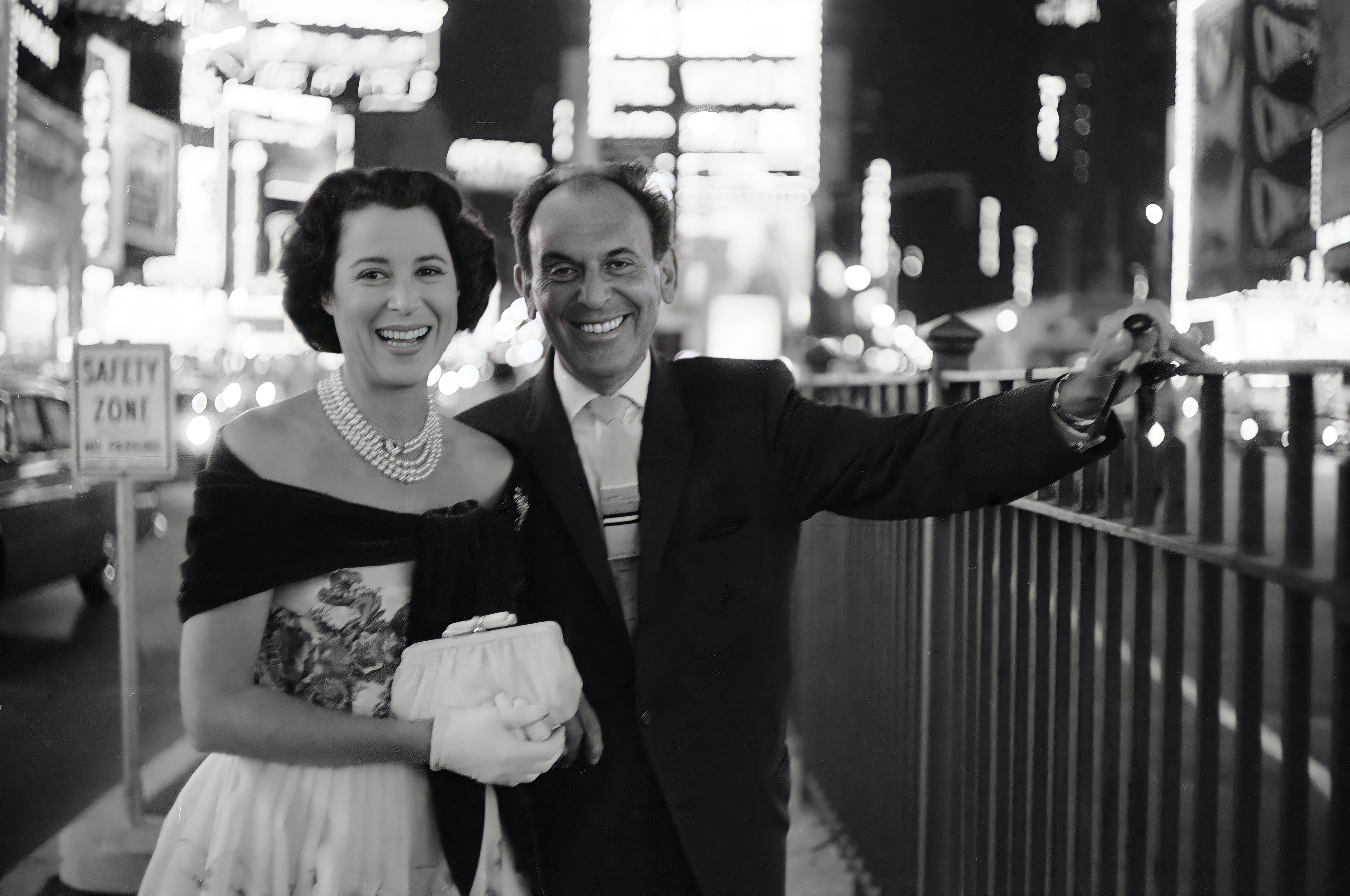
What did Moss Hart get you to do in that weekend that you hadn’t been doing?
Julie Andrews: Moss Hart really just helped me find Eliza and he demonstrated. He said, “No, no, no, you’re acting like a school girl,” or “That’s better, that’s better,” you know. It’s hard to say what he did. He created pictures in my head. He helped me understand some of Eliza’s dilemma. I don’t know which was the hardest part, the first half or the second half because they were both very hard. I was struggling with the Cockney accent. I’m not great at accents, believe it or not. Even though I have a good ear for things, I don’t have a great ear for accents. But I was struggling with that, too. He just helped me see what courage this young lady had. Eliza Doolittle that is. We rehearsed on the roof of the New Amsterdam Theatre, which in those days was the scruffiest, dirtiest place. That’s the theater where all the Ziegfeld Follies had been, and there was this great nightclub up above that had gone into terrible disrepair. Anyway, I knew going down to the New Amsterdam that I was in for an awful time.
It was a little bit like going to the dentist. You knew it was going to be very painful, but if you could stick it out, maybe with luck you’d come out feeling a heck of a lot better. And that’s what Moss [Hart] did for me. It was painful. And he said, “We have no time for embarrassment. We have no time for anything but the blunt truth.” And he shaped, pushed, cajoled, wheedled, loved me, yelled at me, just helped me become Eliza Doolittle. And although by the following Monday, I’m sure I retreated 50 percent, I had gained 50 percent and it gave me the foundation from which to really start working on the role. And I played My Fair Lady for three-and-a-half years. And Alan Lerner once said that he felt that a long run in a very good role was more help to a performer than doing repertory with lots and lots of short roles. You might become very facile, but what I did was learn what did get a laugh, what didn’t get a laugh, and why I didn’t get it if I didn’t get it. What the difference was in terms of it raining outside or snowing or an audience that was coughing their hearts out or one that was too hot in the seasons, when your leading man has a headache or when you have a voice that’s hanging on by a thread. I think I learned in My Fair Lady everything that set me up in later years in good stead because I really learned how to preserve and take care of myself and I was learning on my feet every single performance.
It played havoc with me physically because three-and-a-half years is a very long time. It was like a long tunnel. I did get a break between England and America, but it wasn’t that long.
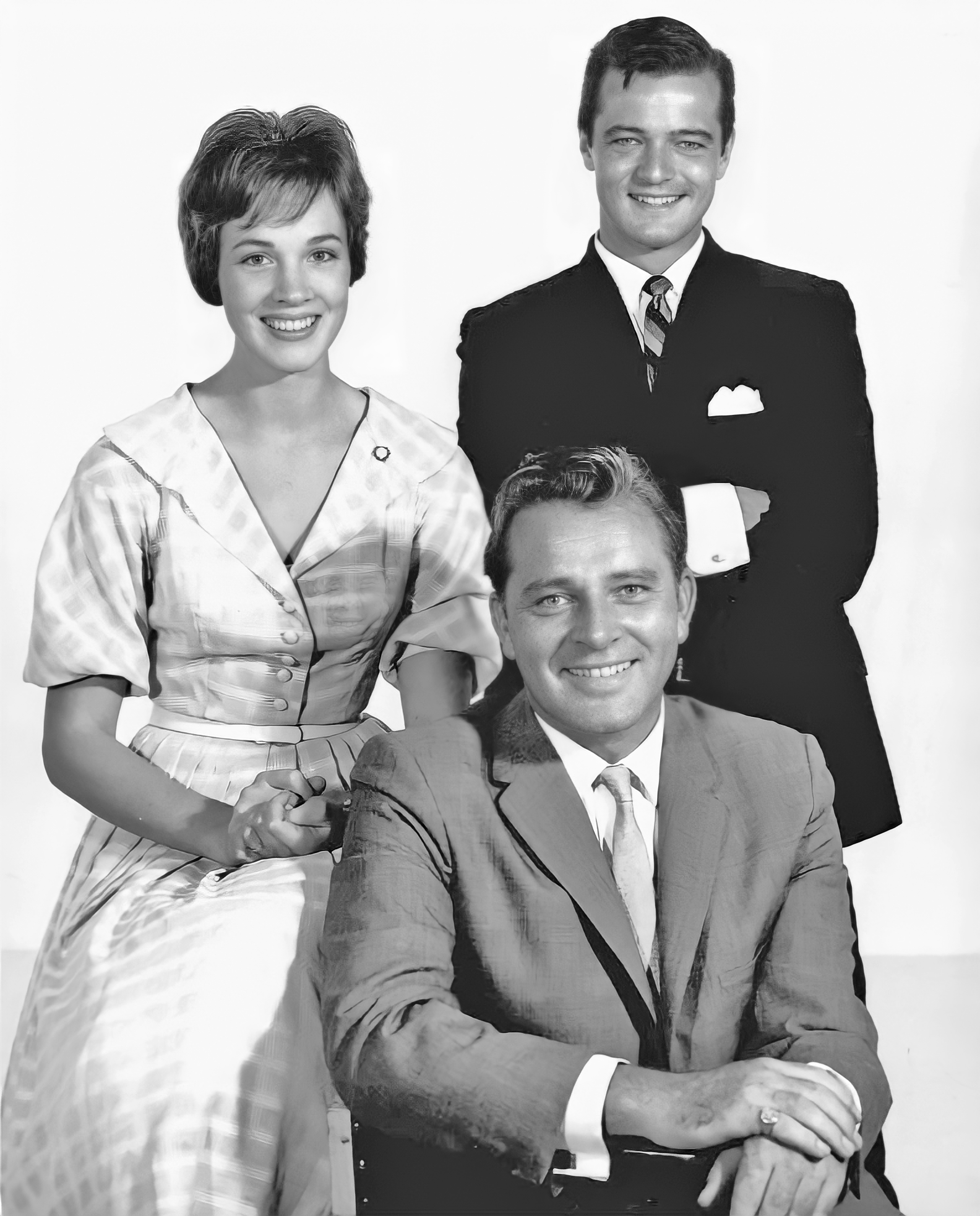
You were passed over for the film of My Fair Lady, and then made a fantastic screen debut in Mary Poppins. How did that all come about?
Julie Andrews: Again, the good fortune in my life suddenly came along. After My Fair Lady I was very lucky to do Camelot for Lerner and Loewe with the wondrous Richard Burton. By now I was married to Tony Walton and I did know my way around Broadway, and I knew a little bit more about performing, and everybody trusted me and I wasn’t quite so desperately shy.
My Fair Lady was bought by Jack Warner to be made into a movie. I didn’t think I’d get it. Alan Jay Lerner and Moss Hart, I believe, hoped that I would. Rex [Harrison] certainly was going to make it. But I understood very well when they cast Audrey Hepburn in the role because, although by then I was a fairly big name in the small pond that is Broadway, I certainly wasn’t known across America, and I certainly had never made a movie. So I didn’t get the role of My Fair Lady in the film and, lo and behold, I was in Camelot and Walt Disney came to see Camelot. He was advised to see it because he was putting together this movie of Mary Poppins. He came backstage afterwards. I thought he was just going to visit. And he said would I like to come to Broadway — sorry, to Hollywood. I was on Broadway. Would I like to come to Hollywood to see the drawings, the designs, the art, hear the songs and the lyrics for this musical of an English book, Mary Poppins, that he was doing.
And he turned to Tony Walton and said, “And what do you do, young man?” Tony was, and is, a designer of theater and film. A wonderful designer of sets and costumes, but he had done very, very little at that time and he explained this to Walt. And Walt said, “Well, then you better bring your portfolio with you when you both come.” Oh, and I was just a teeny pregnant, like about two to three months pregnant. And I said, “But I’m going to have a baby, Mr. Disney.” He said, “It’s okay. We’ll wait.” And so…
Tony and I went to Hollywood and Walt showed us everything to do with Mary Poppins and also wined and dined us so sumptuously and so wonderfully. And, it was such an easy thing to do to say, “Yes, thank you, Mr. Disney. I would love to do that movie,” because everything seemed to come full circle, because all the stuff in Poppins had that rum-ti-tum quality of being vaudeville. And all of a sudden I thought, “Right, I’m home because this I can embrace and perhaps bring something to.” And again, in the kindest hands possible, I was taught how to make a movie and that was the beginning of that. How lucky can anybody get losing out on My Fair Lady and three months later being asked to do Mary Poppins?
To this day a lot of your fans are upset that you weren’t in that movie, but it sounds like you made your peace with it.
Julie Andrews: I did make my peace with it. That isn’t to say that years later I didn’t wish that somewhere, somehow I had put down My Fair Lady definitively, just so that my children or my grandchildren could see it. But in the great scheme of things I ain’t complaining one bit.
What was it like winning the Oscar?
Julie Andrews: I honestly didn’t think I would. I really thought Anne Bancroft was going to get it that year for The Pumpkin Eater. She was superb in that movie. And Poppins was my first film. I never dreamed I would get it. Actually, when I did get that Oscar I really felt that it was more because I had missed out on My Fair Lady, that Hollywood was (a) saying welcome and (b) saying how sorry they were that I didn’t get it. In the speech that I gave I said, “I always knew Americans were generous but this is absolutely ridiculous,” and I really felt that it was generosity and their saying, “Welcome, welcome.”
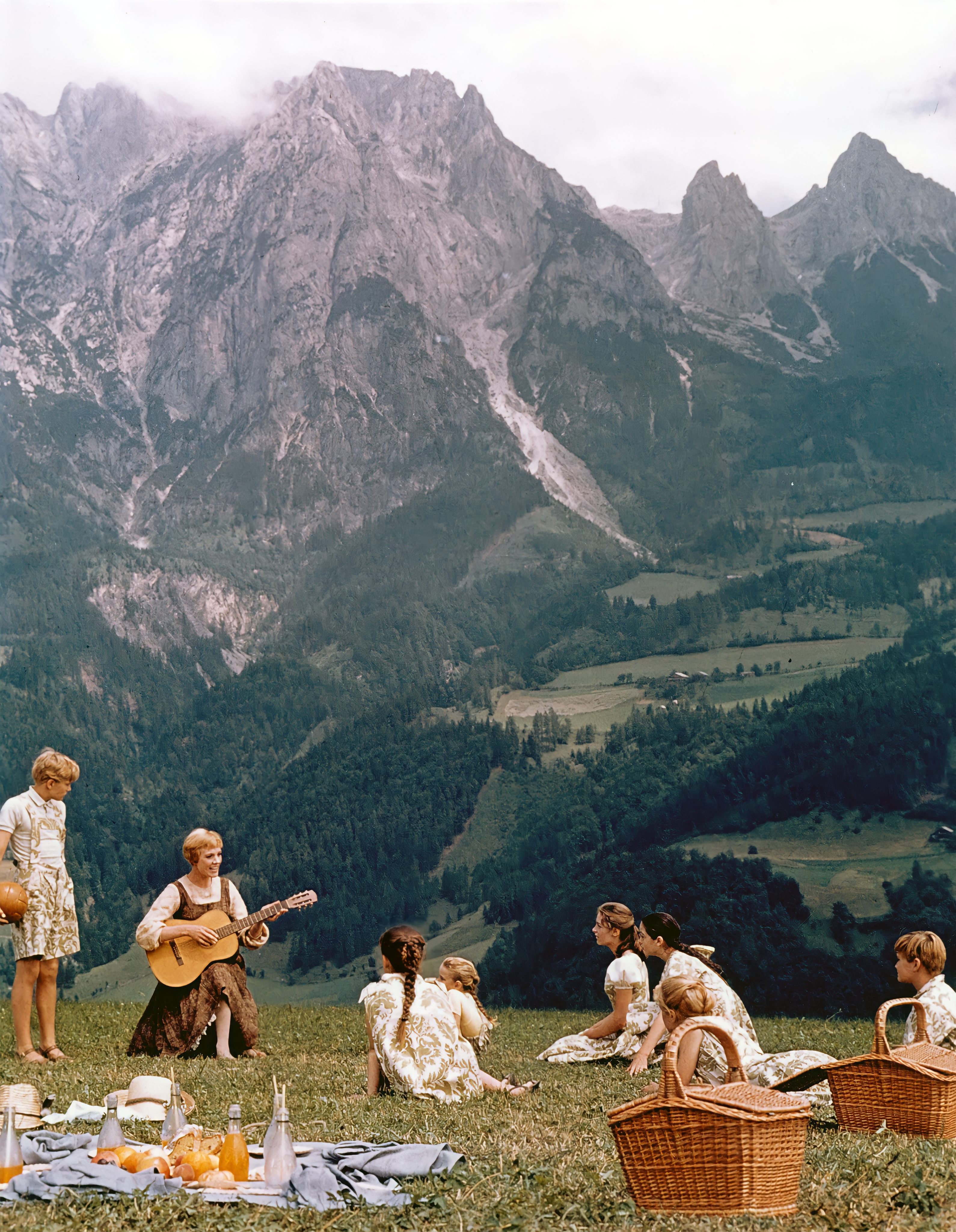
Your movie The Sound of Music has become a classic. Was it clear to you that this was going to be a great piece of work when you first encountered it?
Julie Andrews: When I was first asked if I would like to do Sound of Music, I was very thrilled to be asked and very glad that I was going to do the movie, but was a little careful about certain aspects of it because it was tremendously saccharine, on Broadway particularly, and it seemed to me that if we weren’t careful with the real scenery and with everything else that was going into it, it could be horribly sugary. And I certainly made every effort to make it more astringent, and the great Christopher Plummer contributed so much in that respect. It was his performance that was the glue, the vinegar that held the film together. And then Robert Wise, who was again an adorable man, our director, and he taught me a great deal about filmmaking because Mary Poppins was the first film I ever made, and then I made one called The Americanization of Emily, but by the time I got to Sound of Music I was probably getting full of a lot of little tricks and things that I didn’t know I was doing, and Bob said, “Don’t do that. Don’t do that. Do that.” And I really learned a little bit more about filmmaking.

